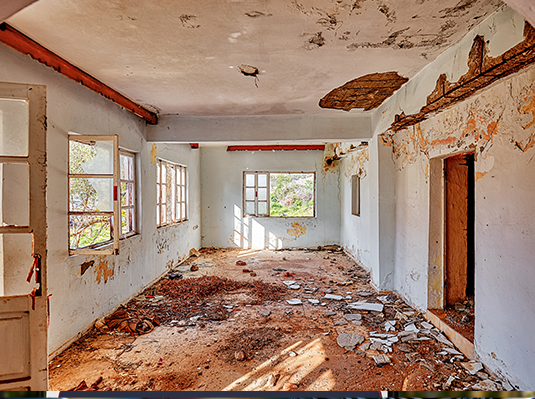
What should I do before I file a claim?
If your home is damaged, the very first thing you should do is check the health and safety of everyone present and seek medical attention for any injuries that may have occurred. If you’ve followed this first step, you’ll lower your chances of facing a negligence lawsuit.
Your next step is to make sure you stop any further damage. For example, if you have a pipe burst in your home, do not make a claim before you shut the water off and soak up whatever excess you can. Addressing the most pressing issue might go against your initial instinct, as we’re constantly told not to tamper with the elements of a scene. However, you are responsible for ensuring that the damage does not persist and risk having your claim rejected if you don’t.
When should I file a claim?
Check with your agent and clarify that your claim is covered under your current policy. Once you’ve confirmed your damage is a covered event, get an estimate of how much it will take to fix the damage. If you have an idea of how much it will cost, you’ll save time and set expectations for how much you might receive after your deductible.
Sometimes it may not be in your best interest to make a claim, even if it is a covered event. The most common example of this is if the damages do not exceed your deductible amount. For example, imagine you have a $1,000 deductible on your insurance and your home is broken into. If you only lost $300 worth of property plus $500 for a new window, then your total claim would be $800, but that would not meet your $1,000 deductible and you would get paid $0 from the insurance company.
Assuming it is still in your best interest financially to file a claim after paying the deductible, you will want to ask your agent to assign you a claims specialist. The claims specialist will coordinate directly with you to finalize the estimate and put a plan in place to get the damage repaired. The insurance company will get the claims money to you or the contractor, and then you can get the damage repaired.
How should I handle a theft claim on my homeowners insurance?
Filing a theft claim will look very similar to filing a claim for damage, but there are some key points to keep in mind with jewelry or valuables.
Once you confirm nobody is in immediate danger, call the police. The insurance company will want a police report for the incident, and if you do not engage the police, you could have your claim rejected.
After you have a police report in hand, call your insurance company. If you had the item insured on its own policy, call the agent over that floater policy. Otherwise, call your home insurance carrier. If your coverage has been properly written, the rest of the claims process should be standard, with the one exception being that you will likely have a zero-dollar theft deductible for scheduled items.
Note: This is why it is so important to make sure to purchase additional jewelry coverage so you can take advantage of the zero-dollar theft deductible on your watch or jewelry.
What happens if a neighbor’s tree falls on my home?
If your neighbor’s tree falls on your home, coverage is not guaranteed on your home insurance. We’ll break down three possible scenarios.
- Scenario 1: You are covered on your policy. Your homeowners insurance company will want to know why the tree fell. If it fell from a storm or was caused by another covered peril, they will typically provide coverage.
- Scenario 2: You pay out of pocket. If the tree was rotten or neglected and happens to fall over, the claim will typically be rejected, and your choice becomes limited. Negligence is never going to be covered with any home insurance company, so make sure you check the trees on and around your property, including your neighbor’s trees, and remove any that have died. You should also inform your neighbor that one of their trees has died and ask them to remove it before it causes any damage.
- Scenario 3: Your neighbor’s policy covers it. This is a highly unlikely scenario unless lawyers become involved. The reason is that their home insurance dwelling coverage is meant to cover their own home. In a case where their tree damages your property, they may be held responsible in court for damages to people and property and should be covered with the liability section of their own policy.
The first thing you need to do after a break-in is get your family to a safe place. Home invasions and car thefts are often traumatic incidents, and you should consider your well-being first over any damaged assets. The next step is to call the police. Even if you do not think the police will be able to catch the criminal, the police report is vital for the claims process.
After that, you’ll assess the damages. This can be challenging as you may not always remember how much stuff you owned. This is why it’s important to take pictures or videos of every room in your home in case you have a break-in or a fire so you will be able to recuperate your property. Then you’ll call your insurance company and follow a similar process to the ones outlined above.
If you’re an existing Goosehead client needing assistance in filing a claim, please reach out to our Service team for help.
The contents of this article are for informational purposes only. You should not act or refrain from acting based on this information without first consulting a Goosehead licensed agent. We disclaim all liability for actions taken or not taken by you based on the contents of this article which is provided "as is." Goosehead makes no representation that this content is error-free.

